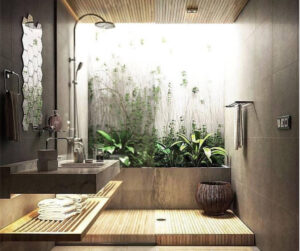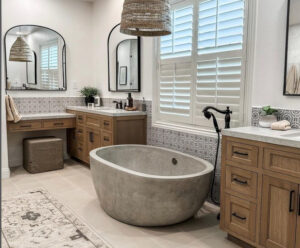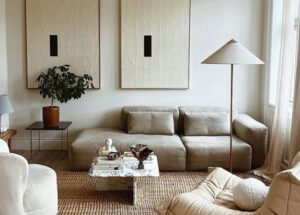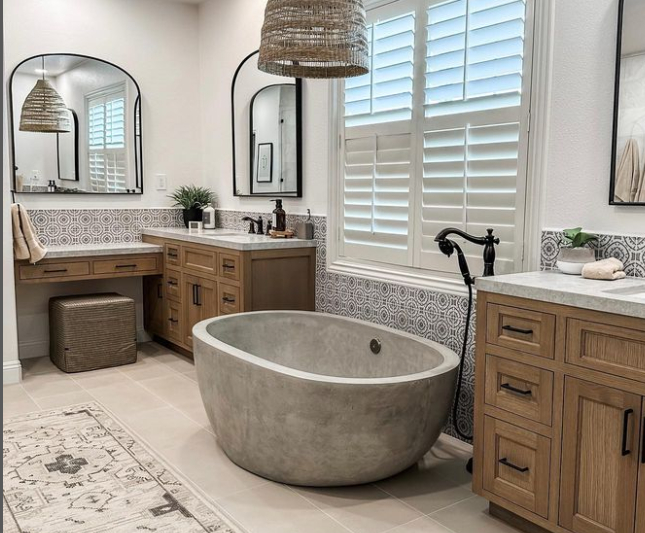In a world brimming with noise and constant stimulation, finding solace within the confines of our homes has become an essential pursuit. The art of interior design has evolved beyond mere aesthetics to encompass a mindful curation of spaces that promote relaxation and rejuvenation. If you’re yearning to transform your living space into a serene sanctuary, here are some expert tips to guide you on your journey to creating a calming haven.
1. Embrace Soft and Soothing Colors
The power of colour cannot be underestimated when it comes to establishing an atmosphere of tranquillity. Opt for a palette dominated by soft, muted tones such as gentle blues, pale greens, warm greys, and earthy neutrals. These colours not only evoke a sense of calm but also visually expand the space, making it feel more open and airy.
2. Let There Be Natural Light

Natural light is a coveted asset in any interior space. It has the ability to instantly lift moods and create an inviting ambience. Design your space to maximize the entry of daylight by using sheer curtains, strategically placed mirrors, and light-colored furnishings. If privacy is a concern, consider frosted glass or translucent window coverings to maintain that soothing connection with the outdoors.
3. Declutter for Peace of Mind
Clutter is the enemy of tranquility. A cluttered space not only disrupts the visual harmony but can also lead to mental unrest. Embrace the minimalist mantra and curate your belongings with care. Choose functional furniture pieces with hidden storage solutions to keep surfaces uncluttered, allowing your mind to unwind in an organized environment.
4. Incorporate Natural Elements

Bringing the outdoors in is a design trend that never goes out of style. Infuse your space with natural elements like potted plants, wooden furniture, stone accents, and woven textiles. These elements not only add texture and visual interest but also connect you with nature, contributing to a sense of grounding and serenity.
5. Mindful Furniture Arrangement
The arrangement of furniture plays a pivotal role in shaping the flow of your space. Opt for a layout that promotes easy movement and openness. Create cozy conversation corners with comfortable seating, and arrange furniture to allow for unobstructed pathways. The balance between function and aesthetics fosters an environment that is both visually pleasing and functionally calming.
6. Texture for Tactile Comfort

Texture is a sensory delight that can elevate the tactile experience of your space. Incorporate plush throws, soft cushions, and rugs with varied textures to encourage a sense of comfort and coziness. Running your hands over different materials can have a soothing effect and contribute to the overall relaxation of the room.
7. Scented Serenity
Harness the power of aromatherapy to transform your space into an olfactory oasis. Light scented candles, use essential oil diffusers, or place potpourri bowls strategically around your home. Scents like lavender, chamomile, and eucalyptus are renowned for their calming properties, creating an environment that engages your senses and encourages relaxation.
8. Personalize with Purpose

While minimalism is key, personal touches should not be overlooked. Select a few cherished items, such as artwork or family photographs, to adorn your walls and shelves. Thoughtfully chosen pieces can infuse your space with warmth and a sense of personal history, making it even more conducive to relaxation.
In the hustle and bustle of modern life, the importance of a tranquil home environment cannot be overstated. By incorporating these expert tips into your interior design approach, you can create a space that not only appeals to the eyes but also nurtures your well-being. Remember, the journey towards a relaxing home is a thoughtful and ongoing one, deserving of time and consideration.


